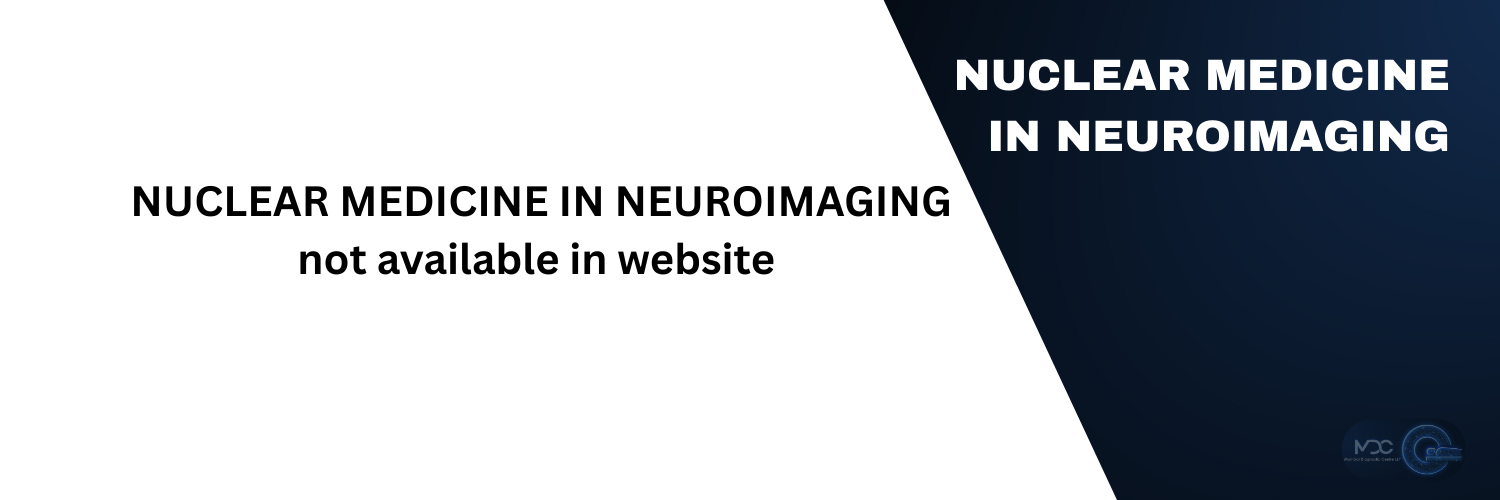What is Nuclear Neuroimaging?
Nuclear neuroimaging is an advanced diagnostic tool that uses small amounts of radioactive material and special scanners like PET (Positron Emission Tomography) and SPECT (Single Photon Emission Computed Tomography) to look at the function and blood flow in your brain. It provides more detailed information about your brain's activity than traditional scans like MRI or CT.
Why Would You Need a Nuclear Neuroimaging Scan?
Your doctor may suggest this test if you're experiencing neurological issues like:
- Early signs of Alzheimer’s or Parkinson’s disease
- Epileptic seizures (helping guide surgical treatment)
- Stroke recovery and brain injury assessments
- Brain tumors (grading or checking for recurrence)
- Psychiatric conditions such as depression or obsessive-compulsive disorder (OCD)
Types of Nuclear Neuroimaging Scans
FDG-PET Brain Scan
What it does: Measures glucose metabolism in the brain (active brain areas use more glucose).
Why it's important: It’s the best scan for detecting early signs of dementia and differentiating types of dementia like Alzheimer’s.
DaTscan (Ioflupane SPECT)
What it does: Looks for dopamine transporter loss, a key feature in Parkinson’s disease.
Why it's important: It helps distinguish Parkinson’s disease from other movement disorders, like essential tremor.
Amyloid PET Imaging
What it does: Detects amyloid plaques in the brain, which are a hallmark of Alzheimer’s disease.
Why it's important: It can find amyloid plaques years before Alzheimer’s symptoms appear.
HMPAO SPECT
What it does: Measures blood flow in the brain.
Why it's important: Useful for diagnosing and monitoring conditions like epilepsy and stroke.
How Does It Work?
- Tracer Injection: A small amount of radioactive material (tailored for the specific condition) is injected into your bloodstream.
- Uptake Period: The tracer takes about 30-90 minutes to spread through your brain.
- Scanning: A scanner captures images of how your brain uses the tracer (this takes 20-40 minutes).
- Image Analysis: A specialist reviews the 3D images to identify areas of concern.
Preparation Guidelines
- Fasting for 4-6 hours before an FDG-PET scan (helps stabilize blood sugar levels).
- Avoid caffeine and alcohol for 24 hours before the scan (these can affect blood flow).
- Continue taking most medications (but check with your doctor if you're on Parkinson's meds).
- No metal objects (similar to MRI prep).
What to Expect During the Procedure
- Total Time: 2-3 hours (including waiting time for the tracer to work).
- Scan Time: 30-60 minutes (lying still while the scanner does its job).
- Comfort: The room will be quiet and dimly lit. You can wear earplugs if needed.
- Safety: The radiation used is very low, even lower than the amount we’re naturally exposed to every year.
Benefits of Nuclear Neuroimaging
- Early Detection: Identifies neurological changes 5-10 years before structural damage.
- Monitors Treatment: Tracks how well treatments are working, especially for dementia or brain tumors.
- Surgical Planning: Helps doctors plan surgeries, especially for conditions like epilepsy or brain tumors.
- Non-Invasive: No need for surgery or biopsies.
Who Benefits from Nuclear Neuroimaging?
- Memory loss or confusion
- Unexplained tremors or movement disorders
- Epilepsy not controlled by medication
- Brain tumor patients needing checks for recurrence or grading
Post-Scan Care
- Hydrate well to help flush the tracer from your system.
- No driving restrictions (unless you were sedated).
- Results: Expect to receive your results in 24-48 hours from the specialist.
Book your neuroimaging scan today to get detailed insights into your brain health!
State-of-the-art technology and expert care at our clinic.
Note: All tracers used in nuclear neuroimaging are FDA-approved and safe. Pregnancy is typically avoided during this procedure due to radiation precautions.
